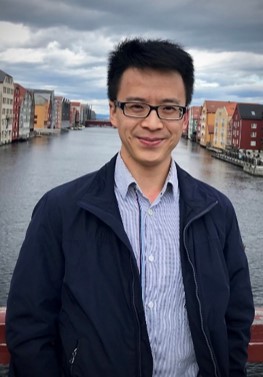

题目:Predicting and Damping of Thermoacoustic Instabilities
时间:2019年5月24日 14:00-15:00
地点:必赢线路检测中心 F210会议室
邀请人:李磊 副教授(内燃机研究所)
Biography
Dr. Dong Yang is a Research Associate at Imperial College London. He got his first 
and Master's degrees from Tsinghua University, and his PhD from Imperial College London with a thesis "The acoustics of short circular holes and their damping of thermoacoustic oscillations" wining the Osborne Reynolds Award 2017 Oral Presentation Finalist – top six best PhDs in Fluid Mechanics in the UK. His research has made significant impact in the aeroacoustics and thermoacoustic communities, including being highlighted in "2017 Highlight of Aeroacoustics research in Europe" by Journal of Sound and Vibration. He has been invited by leading companies such as Rolls-Royce and Siemens to give talks on thermoacoustic damping. He is an organizer of the 23rd International Congress on Acoustics, and reviewer for Journal of Sound and Vibration, AIAA Journal, Combustion and Flame etc.
Abstract
Thermoacoustic instabilities (or "combustion instabilities") come from the positive feedback between acoustics and unsteady combustion; unsteady combustion generates acoustic waves which propagate within the combustor, be reflected by the boundaries and further disturb the flame to generate more acoustics – this may result in large pressure oscillations and is a critical challenge for designing modern low-emission aero-engine and land-based gas turbine combustors. Numerically predicting this is difficult since it requires resolving couplings across very different scales (acoustics, turbulence and combustion). Full-scale experiments are extremely expensive, but lab-scale rig does not capture all key physics. This is especially challenging when real annular combustors with 10 to 20 burners are considered. Evidence will be given for the first time to show how a combination of analytical treatments of acoustics and numerical/experimental treatments of flames in a network sense can systematically predict different types of thermoacoustic modes in annular combustors. To damp thermoacoustic instabilities, acoustic dampers, e.g. Helmholtz resonators, perforated liners/plates, are important tools used by all leading companies. These dampers rely on circular holes with mean bias flow to transfer acoustic energy into vortex energy which is finally dissipated by viscosity; accurately predicting this energy conversion is of key importance – a new theoretical model which greatly extends the capability of widely used classical models will be presented.
